Transcription of Preventive / Corrective Actions (CAPA) Guidelines
1 Preventive / Corrective Actions (CAPA) Guidelines 254 College Ave SE Grand Rapids, MI 49503 616-454-9639 CAPA Facilitator Software Corrective / Preventive Action (CAPA) Made Easy ! See Page 17 2 Table of Contents Introduction .. 3 Corrective Actions .. 3 Preventive 3 Differences between Corrective and Preventive 3 CAPA Procedures .. 4 Identification .. 5 Report Source .. 5 Explanation of the Problem .. 5 Evidence of the 5 Evaluation .. 6 Potential Impact .. 6 Assessment of 6 Remedial Action .. 6 Investigation .. 7 Objective .. 7 Investigation Procedure .. 7 Responsibility / 7 7 Possible Causes / Data Collection .. 8 Results and Data .. 8 Root Cause 8 Action 8 Actions to be Completed .. 9 Document or Specification Changes .. 9 Process, Procedure, or System Changes .. 9 Employee Training .. 9 Action Implementation.
2 9 Implementation Summary .. 9 10 Follow 10 Verification Results .. 10 Effectiveness of the Actions .. 10 Sample Forms .. 12 Corrective / Preventive Action Request .. 12 Remedial Action .. 13 Investigation 14 Problem 15 Action Plan .. 16 CAPA Facilitator Software .. 17 R. M. Baldwin, Inc.. 19 3 Introduction [Return to Table of Contents] Troubleshooting problems and attempting to identify and prevent potential problems is a typical activity for most businesses. The reason is obvious. Problems have a financial impact on the company. The ability to correct existing problems or implementing controls to prevent potential problems is essential for continued customer satisfaction and efficient business practice. However, the missing link in this process is often adequate documentation of the Actions taken. Properly documented Actions provide important historical data for a continuous quality improvement plan and are essential for any product that must meet regulatory requirements demanded by FDA and ISO and other quality systems.
3 This is the reason for the implementation of a formal Corrective Action / Preventive Action (CAPA) program. CAPA is a major area of concern for both FDA, ISO 9000, as well as the Automotive and Aerospace industries. They have recognized that how a quality system is maintained and monitored is critical to its effectiveness. Their risk-based CAPA requirements demand a well documented system that determines the root cause of nonconformance s, system failures, or process problems, corrects the problems, and prevents them from recurring. The documentation must identify why something went (or may go) wrong and what has been done to make sure it does not happen again CAPA is a fundamental management tool that should be used in every quality system. This program provides a simple step by step process for completing and documenting Corrective or Preventive Actions . The result will be a complete, well documented investigation and solution that will satisfy regulatory requirements and form the basis for an effective continuous improvement plan for any company.
4 Corrective Actions [Return to Table of Contents] A Corrective action is a term that encompasses the process of reacting to product problems, customer complaints or other nonconformities and fixing them. The process includes: Reviewing and defining the problem or nonconformity Finding the cause of the problem Developing an action plan to correct the problem and prevent a recurrence Implementing the plan Evaluating the effectiveness of the correction. Preventive Actions A Preventive action is a process for detecting potential problems or nonconformance s and eliminating them. The process includes: Identify the potential problem or nonconformance Find the cause of the potential problem Develop a plan to prevent the occurrence. Implement the plan Review the Actions taken and the effectiveness in preventing the problem. Differences between Corrective and Preventive Actions [Return to Table of Contents] 4 The process used for Corrective Actions and Preventive Actions is very similar and the steps outlined in this document can be used for either.
5 However, it is important to understand the differences and also be aware of the implications involved in performing and documenting each. A Corrective action is a reaction to a problem that has already occurred. It assumes that a nonconformance or problem exists and has been reported by either internal or external sources. The Actions initiated are intended to: a) fix the problem and b) modify the quality system so that the process that caused it is monitored to prevent a reoccurrence. The documentation for a Corrective action provides evidence that the problem was recognized, corrected, and proper controls installed to make sure that it does not happen again. For example, in a manufacturing setting, a large batch of subassemblies produced four weeks ago was found to be out of specification when received for final product assembly. In this situation a problem exists and has been identified. A Corrective action must be implemented to avoid production delays and a possible financial impact on the company.
6 A Preventive action is initiated to stop a potential problem from occurring. It assumes that adequate monitoring and controls are in place in the quality system to assure that potential problems are identified and eliminated before they happen. If something in the quality system indicates that a possible problem is or may develop, a Preventive action must be implemented to avert and then eliminate the potential situation. The documentation for a Preventive action provides evidence that an effective quality system has been implemented that is able to anticipate, identify and eliminate potential problems. For example, Statistical Process Control has shown that over a period of several weeks a machining process has slowly but consistently trended toward the upper control limit. This situation would likely require a Preventive action to assure that the process does not get out of control resulting in scrap and/or defective parts and, again, a possible financial impact on the company.
7 A timely, well documented, Corrective / Preventive Action program validates a quality system that is not only capable of identifying potential problems but also effectively correcting them when they do occur. CAPA Procedures [Return to Table of Contents] Implementing an effective Corrective or Preventive action capable of satisfying quality assurance and regulatory documentation requirements is accomplished in seven basic steps: 1. The Identification of the problem, nonconformity, or incident or the potential problem, nonconformity, or incident. 2. An Evaluation of the magnitude of the problem and potential impact on the company. 3. The development of an Investigation procedure with assignments of responsibility. 4. Performing a thorough Analysis of the problem with appropriate documentation 5. Creating an Action Plan listing all the tasks that must be completed to correct and/or prevent the problem. 6. The Implementation the plan. 7. A thorough Follow up with verification of the completion of all tasks, and an assessment of the appropriateness and effectiveness of the Actions taken Note: There are an extensive number of variables in any process whether it is manufacturing, 5software development, or technical services that have the ability to generate occasional quality problems, nonconformities or adverse incidents.
8 These may be actual events that have occurred or circumstances that have the potential to cause a future nonconformance. For the purpose of this program these events or potential events will be referred to as problems. Identification [Return to Table of Contents] The initial step in the process is to clearly define the problem. It is important to accurately and completely describe the situation as it exists now. This should include the source of the information, a detailed explanation of the problem, the available evidence that a problem exists. Report Source The specific origin of the information that initiated this action is recorded. Documenting the source of the information can be very useful when conducting an investigation into the problem and implementing the action plan that is created. It will also provide data for evaluating the effectiveness of the quality system and facilitate communicating the completion of the action to the appropriate individuals or departments.
9 This information may come from many possible sources. For example, situations that require Corrective Actions may come from external sources such as customer concerns or service requests. Internal quality audits, staff observations, quality assurance inspections, trending data, and management review are all examples of possible internal sources of information. Examples of sources that lead to Preventive Actions may include: Service Request Internal Quality Audit Customer Complaint / Concern Quality Assurance Inspection Staff Observation Trending Data Risk Assessment Process Performance Monitoring Management Review Failure Mode Analysis Other sources are possible and will depend on the circumstances. Explanation of the Problem [Return to Table of Contents] A complete description of the problem is written. The description should be concise but must contain sufficient information to assure that the problem can be easily understood from reading the explanation.
10 Evidence List the specific information available that demonstrates that the problem does exist. For example, the evidence for a product defect may be a high percentage of service requests 6or product returns. The evidence for a potential equipment problem may be steadily increasing downtime. Corrective / Preventive Action Request form A sample form is provided Corrective / Preventive Action Request that can be used to initiate a CAPA action and collect the initial information. Evaluation [Return to Table of Contents] The situation that has been described and documented in the Identification section should now be evaluated to determine first, the need for action and then the level of action required. The potential impact of the problem and the actual risks to the company and/or customers must be determined. Essentially, the reasons that this problem is a concern must be documented. Potential Impact Part of the evaluation is a specific explanation of specifically why the problem is a concern.
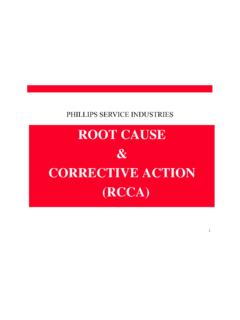

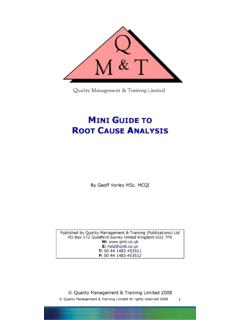
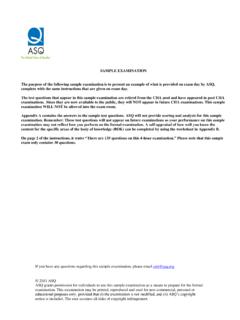

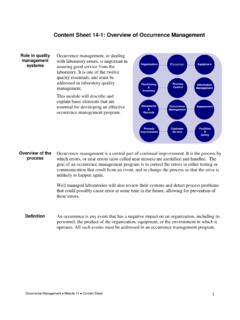
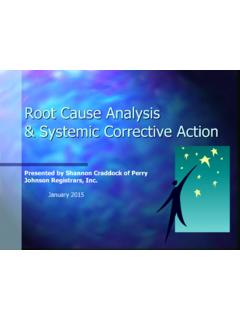
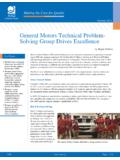
![INTERNAL AUDIT REPORT: [PROCESS] - FED&T - MPG](/cache/preview/4/a/4/9/9/6/0/7/thumb-4a499607465ded8ca5448335a1bab47f.jpg)